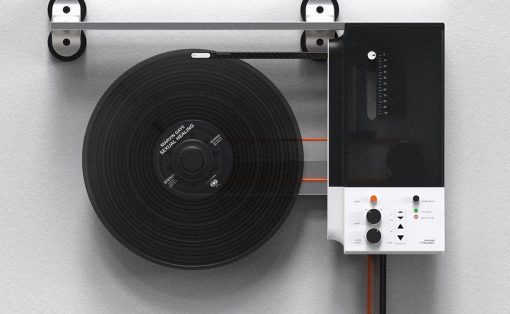While sure, Nothing’s phones create that skeletal, bare-basics design – I could argue that if any phone had to be transparent, it would probably be the Galaxy S25 Edge. At a staggering 5.8mm, the phone is bare-bones as it is – so why not dial that skinny appeal in further by showing the phone’s metaphorical ribcage? Meet the Spigen UltraHybrid ZeroOne case for the Samsung Galaxy S25 Edge, which does exactly that.
Anyone who throws $1000-something on a smartphone will agree that a phone that pricey deserves to last long. Anyone with a phone that’s 5.8mm thick will definitely agree that it’s too thin to use as a daily driver without rocking a protective case. That’s where the UltraHybrid ZeroOne comes in – Spigen’s famous case series that brings a skeletal look and feel to a phone, while protecting it from drops and bumps.
Designer: Spigen
I upgraded my iPhone 15 Pro to a Spigen ZeroOne case this year, and I’ve never been happier. It has much more character than those boring transparent cases, and for one, it helps me differentiate my iPhone from other iPhones lying around on a table. The case relies on Spigen’s R&D when it comes to building protective covers, which means I’ve never really worried about dropping my device, or rather, worried about the device getting damaged when I drop it. I assume that’s the kind of reassurance a Galaxy S25 Edge owner would love too.
The ZeroOne case for the S25 Edge has a uniquely challenging product brief – it has to protect the ultra-slim phone without adding too much to its thickness. To that end, the case does its job phenomenally well. It protects, it enables, it showcases, and the best part, it also packs a built-in magnetic ring to give your S25 Edge MagSafe and Qi2 compatibility, allowing you to snap accessories and chargers to the back without having to separately add a MagSafe sticker. Spigen calls it their MagFit technology, and I honestly wish every Android phone case had it – because the peace I get from hearing my phone snap to its magnetic charger is rare and satisfying.
Each case comes with a bespoke graphic on the back, giving you an X-ray view of the components inside. Spigen doesn’t slap random graphics (or the same graphic) onto every phone. For instance, the graphic on my iPhone case is very different from the one on this S25 Edge case. The design highlights the components inside the phone, from its battery to its chipset, ribbon connectors, the USB-C module, and even a graphic around the wireless charging coil (which hides the MagFit magnet array too).
The best part – and something my designer-brain loves – is that the print on the back is ‘3-dimensional’. The graphic is printed on top as well as the bottom of the transparent backplate, giving it depth and parallax, so it doesn’t feel flat or static. Clever, intentional, gorgeous. That backplate sits within an outer TPU frame, with tactile buttons, and air cushions around the corners that protect your phone from drops as high as 4 feet.
The UltraHybrid ZeroOne case comes in black and white color options, and starts at just $20.99, which feels like peanuts compared to the $1000 phone it protects. However, that’s a very small price to pay for the job it actually does – guarding your flagship phone while giving it undeniable character.















